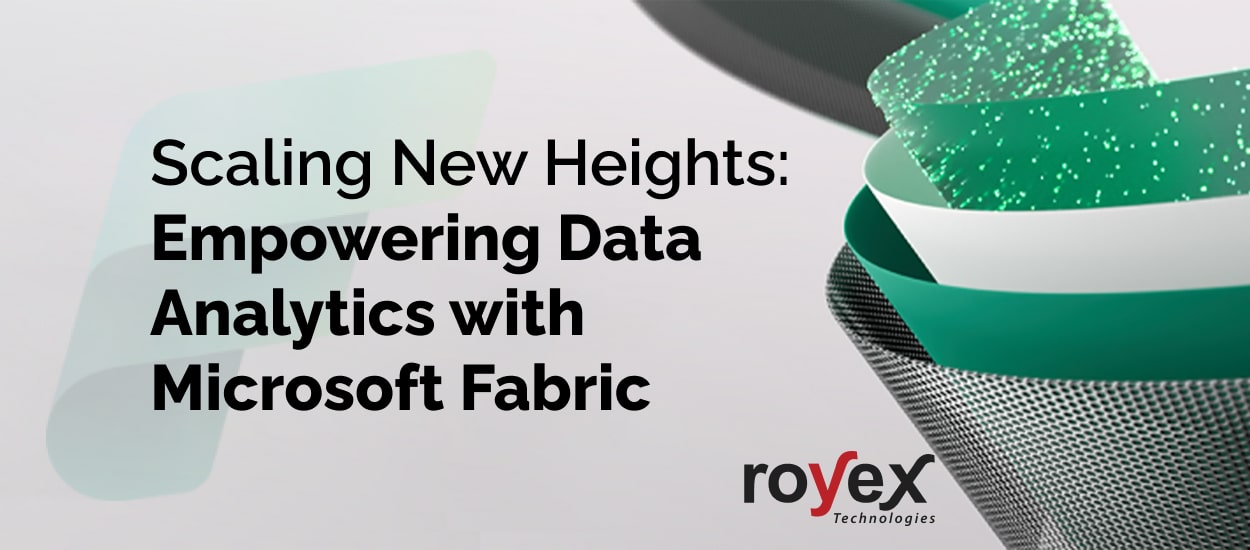
Scaling New Heights: Empowering Data Analytics with Microsoft Fabric
Microsoft Fabric, also known as Azure Service Fabric, is a distributed systems platform developed by Microsoft. It provides a framework for building and managing highly scalable and reliable applications composed of microservices. Azure Service Fabric enables developers to build and deploy applications that can easily scale from a single node to thousands of nodes while ensuring high availability and fault tolerance.
It provides a powerful framework for building and managing highly scalable and reliable applications, particularly those built using a microservices architecture. Here are a few reasons why Microsoft Fabric is considered a big deal:
- Scalability: Microsoft Fabric allows applications to easily scale from a single node to thousands of nodes, making it ideal for handling large workloads and high-demand scenarios. It provides automatic load balancing and distribution of services across nodes, ensuring efficient resource utilization.
- Fault Tolerance and High Availability: Microsoft Fabric incorporates built-in mechanisms for handling failures and maintaining high availability. It supports automatic failover and recovery, ensuring that applications remain accessible and responsive even in the face of hardware or software failures.
- Microservices Architecture: Microsoft Fabric promotes the development of applications using a microservices architecture, where an application is decomposed into a collection of loosely coupled, independently deployable services. This architectural style brings benefits such as scalability, agility, and ease of maintenance.
- Stateful and Stateless Services: Microsoft Fabric supports both stateful and stateless services. Stateful services can maintain and persist their state, which is crucial for certain types of applications. Stateful services simplify data management and allow for complex business logic while maintaining high performance.
- Integration with Azure Services: Microsoft Fabric seamlessly integrates with other Azure services, such as Azure Active Directory, Azure Storage, Azure Cosmos DB, and Azure Event Hubs. This enables developers to leverage the power of these services and build comprehensive, end-to-end solutions.
- Developer Productivity: Microsoft Fabric provides a developer-friendly environment and tooling, allowing developers to focus on writing code and delivering business value rather than managing infrastructure. It supports various programming languages and provides rich debugging and monitoring capabilities.
- Industry Adoption: Microsoft Fabric has been adopted by various organizations across industries, including Microsoft itself. It has been used to build and deploy mission-critical applications with demanding scalability and reliability requirements.
Why Microsoft Fabric Is A Big Deal For Data Analytics Developers
Microsoft Fabric, or Azure Service Fabric, can be important for data analytics developers or anyone involved in data analytics for the following reasons:
- Scalable Data Processing: Microsoft Fabric enables developers to build data analytics applications that scale from small to large data sets. It provides the ability to dynamically add or remove resources based on demand, ensuring efficient and scalable data processing. This is crucial for handling big data workloads and performing complex analytics tasks.
- Fault Tolerance and High Availability: Microsoft Fabric incorporates fault tolerance mechanisms that automatically handle failures and ensure the high availability of data analytics applications. This is essential for continuous data processing and avoiding data loss during failures.
- Microservices Architecture: Microsoft Fabric supports the microservices architectural pattern, which is well-suited for data analytics applications. Developers can break down their analytics workflows into smaller, specialized services that can be independently developed, deployed, and scaled. This enables agility, scalability, and modularity in the development process.
- Stateful Services for Data Persistence: Microsoft Fabric supports stateful services, which can be beneficial for data analytics applications that require persistence. Developers can leverage stateful services to store and manage intermediate or final analysis results, facilitating efficient data processing and retrieval.
- Integration with Azure Data Analytics Services: Microsoft Fabric integrates with various Azure data analytics services, such as Azure Synapse Analytics, Azure Data Factory, and Azure Databricks. These services provide advanced analytics capabilities, data movement and transformation workflows, and big data processing capabilities. By leveraging the integration with these services, data analytics developers can build end-to-end data analytics solutions that encompass data ingestion, processing, analysis, and visualization.
- Developer Productivity and Tools: Microsoft Fabric provides a developer-friendly environment supporting multiple programming languages, robust debugging tools, and monitoring capabilities. This enhances developer productivity by offering the tools and features to build, test, and maintain data analytics applications efficiently.
- Integration with Ecosystem: Microsoft Fabric integrates with the broader Azure ecosystem, which includes a vast array of services and tools for data analytics. This allows data analytics developers to leverage the power of services like Azure Machine Learning, Azure Data Lake, and Power BI, enabling them to build comprehensive and insightful data analytics solutions.
Overall, Microsoft Fabric is important for data analytics developers or anyone involved in data analytics as it provides a scalable, fault-tolerant, and flexible platform for building data analytics applications. It offers the necessary tools, integration options, and architectural patterns to enable efficient data processing, analysis, and visualization, facilitating the development of robust and advanced data analytics solutions.





